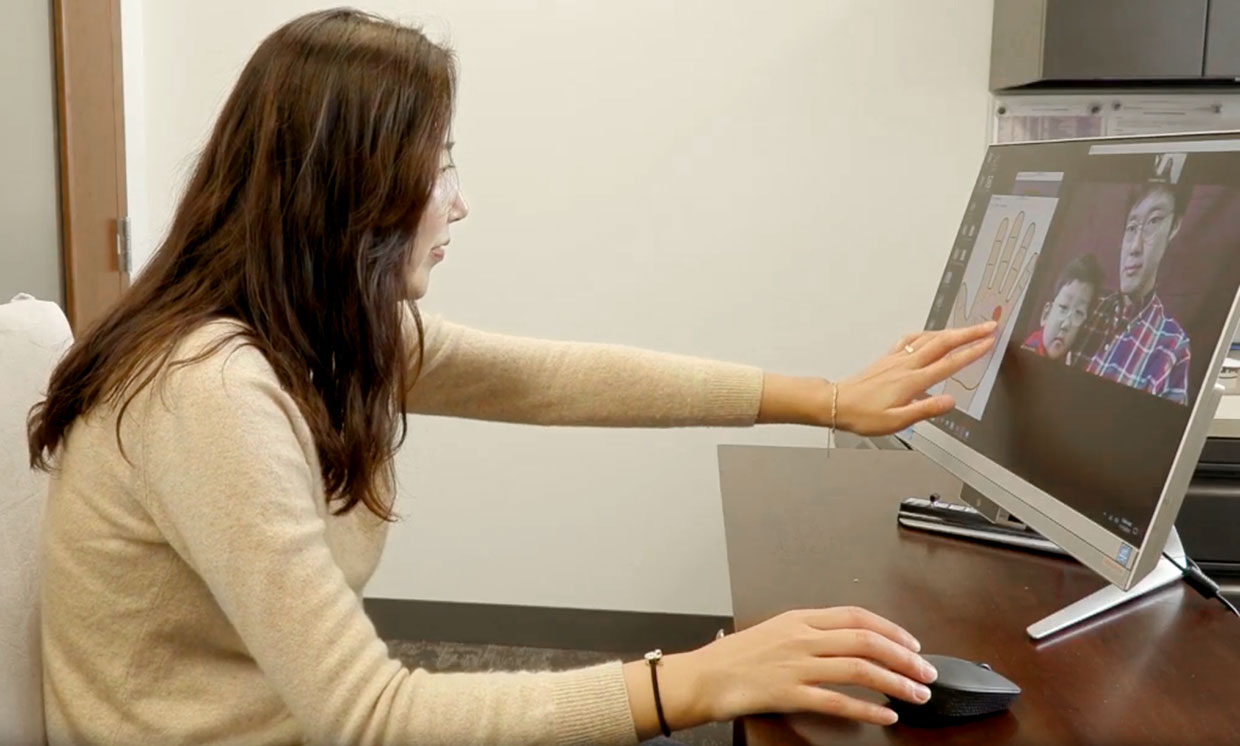Source: Thailand Medical News Nov 25, 2019 5 years, 4 months, 2 weeks, 5 days, 12 hours, 40 minutes ago
These are some of the applications of a new
wireless skin patch developed by
Northwestern University that can be used in many
medical and
health applications:
-The stick-on device makes it possible to share a virtual touch on social media, feel strikes from a video game, and detect pressure on a prosthetic
-A mother smiles at her toddler via a live video feed, then runs her fingers along the computer screen. Miles away, the boy feels the strokes of her hand on his back.

-A man with a lower-arm amputation picks up a beer can with his prosthetic hand and feels the artificial fingers make contact with the can.
-A gamer’s animated character is struck on the arm and shoulder by an opponent, and the gamer feels pressure on her corresponding body parts.
These are all real-life applications of a new electronic skin technology from the lab of John Rogers and his colleagues at Northwestern University, detailed in a paper published today in the journal
Nature. The soft, lightweight sheet of electronics is wireless, battery-free, sticks right to the skin, and re-creates a sensation of touch.
 John Rogers
John Rogers
John Rogers, founder and executive director of the university’s Center for Bio-Integrated Technologies told
Thailand Medical News in a phone interview, “We wanted these things to be thin and flexible and garment-like.”
The new
device is preceded by decades of work in haptic interfaces technologies that enable a sense of touch, often for prosthetic arms and hands. It is common, however, for haptic devices to contain large individual actuators, rather than an array, and to be bulky with wires and batteries, which limits their widespread production and use.
John Rogers has long worked on electronics that stick to the skin, and much of that past work has focused on developing sensors to detect biological vital signs. Now, instead of getting information from the skin, the researchers want to provide feedback to it.
.jpeg)
The novel e-skin is like a lasagna of silicon and metal. An outer layer of breathable, stretchable fabric sits atop the meat of the technology: a silicon-wrapped web of electronics, including a collection of copper coils, integrated circuit (IC) switches, and antennae for power transmission. Below the electronics is a layer of round, dime-sized actuators, which vibrate at a frequency of about 200 cycles per second, says Rogers. The bottom layer is a thin ma
t of silicon that sticks to human skin and can be cut to various shapes and sizes.
Rogers adds “The key advances were in miniaturizing and creating power-efficient mechanical actuators that can be tiled into arrays, controlled in real-time through a wireless interface, and also be powered wirelessly.Currently, the antenna delivering power and control signals needs to be within 30 to 50 centimeters (1 to 2 feet) of the skin patch, so it could be mounted on the back of a chair or under a desk or bed.You can’t just walk anywhere.You have to be close enough to that power antenna.”
The sensation of the device on one’s skin is like the gentle stroking of a fingertip, Rogers says. The e-skin performed well when bent, folded, and twisted, and was comfortable when worn for 12 hours, as well as during moderate and vigorous exercise. (And the patch can be applied to and removed from hairy skin without pain, the authors point out.)
Although the team is currently testing individual skin patches, Rogers is already thinking about a full-body suit. He suspects it will take about 1,800 actuators distributed around the body (not including the hands and face, which are a greater challenge due to the sheer density of touch receptors there) to create a full body suit. It just might be a little heavy, he says.
This could change if the team is able to miniaturize the actuators further. Their simulations suggest the diameter and thickness of each magnet in the actuators could be reduced by a factor of 10 and 3, respectively, without compromising performance. Rogers also hopes to eventually expand the range of sensations that the technology transmits to include the feeling of being poked, as well as compression, and mild heating and cooling.
In addition to applications in social media, gaming, and prosthetics, Rogers, who comes at the project from a medical engineering angle, hopes to use the devices in medical training and therapy. His team is currently working with a rehabilitation research hospital in Chicago, the Shirley Ryan AbilityLab, to use the gentle touch of the devices to help stroke victims re-learn how to swallow at the right time. “It’s the first example of many applications in the broader space of rehabilitation science,” says Rogers. “That’s the direction we’re moving our research.”
Reference: Yu, X., Xie, Z., Yu, Y. et al. Skin-integrated wireless haptic interfaces for virtual and augmented reality. Nature 575, 473–479 (2019) doi:10.1038/s41586-019-1687-0
https://www.nature.com/articles/s41586-019-1687-0 

.jpeg)